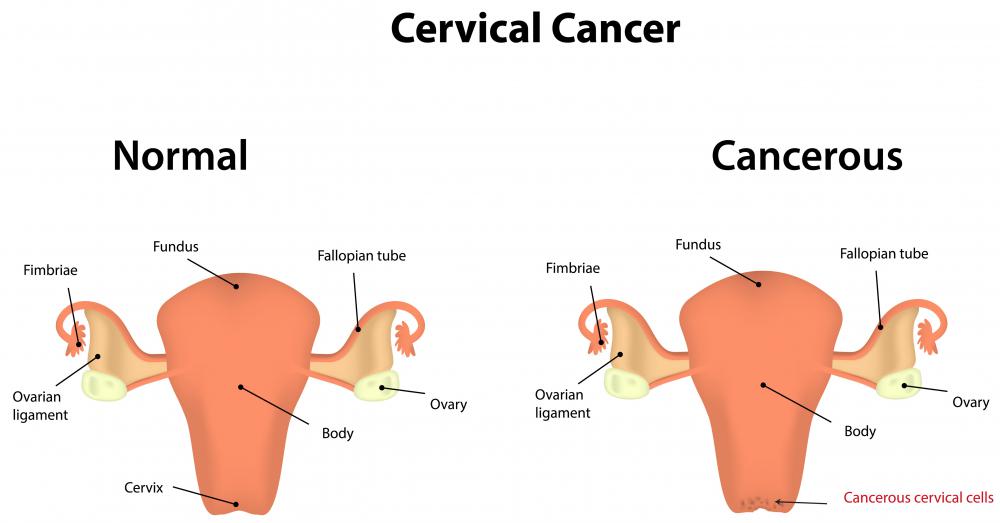At TheHealthBoard, we're committed to delivering accurate, trustworthy information. Our expert-authored content is rigorously fact-checked and sourced from credible authorities. Discover how we uphold the highest standards in providing you with reliable knowledge.
What is High Grade Dysplasia?
Dysplasia is a medical term that refers to the development of abnormal cells or cellular tissue in a specific area of the human body. While the condition itself is not considered a type of cancer, it does greatly increase the chances of cancerous cells emerging and spreading. High-grade dysplasia is an advanced form of the condition that usually appears in cervical tissue as a result of the human papillomavirus (HPV). When a gynecologist recognizes signs of high grade dysplasia during a pap smear test, he or she usually recommends immediate surgical procedures to remove the abnormal cells in an attempt to prevent the development cervical cancer. Dysplasia is usually relieved with treatment, though it is possible for the condition to reemerge in the future.
Some types of sexually transmitted HPV can cause high grade squamous intraepithelial lesions (HGSIL) to appear, clear indicators of high grade dysplasia. HGSIL develops on the outer layers of the cervix, and cannot usually be detected by the naked eye. There are usually no physical symptoms of of HGSIL until it has developed into cancer, which may take months or years. It is essential, therefore, for a woman to schedule regular visits with her gynecologist to check for signs of HPV, HGSIL, and other abnormalities on a regular basis.

HGSIL can be detected through a standard pap smear test, in which a gynecologist scrapes cellular tissue from the surface of the cervix and orders laboratory tests to check for maladies. A pap smear that suggests high grade dysplasia requires the doctor to conduct further testing to confirm the diagnosis. He or she usually conducts a cervical biopsy to test a larger amount of tissue and inspects the cervix microscopically using a specialized tool known as a colposcope. Once high grade dysplasia has been confirmed, the doctor typically arranges for surgery.

Several different methods have been developed to safely remove abnormal cervical cells. Some surgeons choose to destroy cells with laser therapy or freeze them using cryotherapy, a technique that involves spraying tissue with tiny amounts of liquid nitrogen. Another popular treatment is the loop electrosurgical excision procedure, in which a wire loop is inserted into the cervix and electrified, removing cells as it comes into direct contact with them.

Treatment procedures for high grade dysplasia are delicate and exacting, but skilled surgeons are usually successful in removing most or all tissue tainted with HGSIL. Gynecologists typically recommend that women who have undergone treatment for dysplasia return for regular checkups to ensure that abnormal growths have been fully eradicated. Most patients are able to make full recoveries and never develop cervical cancer.
AS FEATURED ON:
AS FEATURED ON:

















Discuss this Article
Post your comments